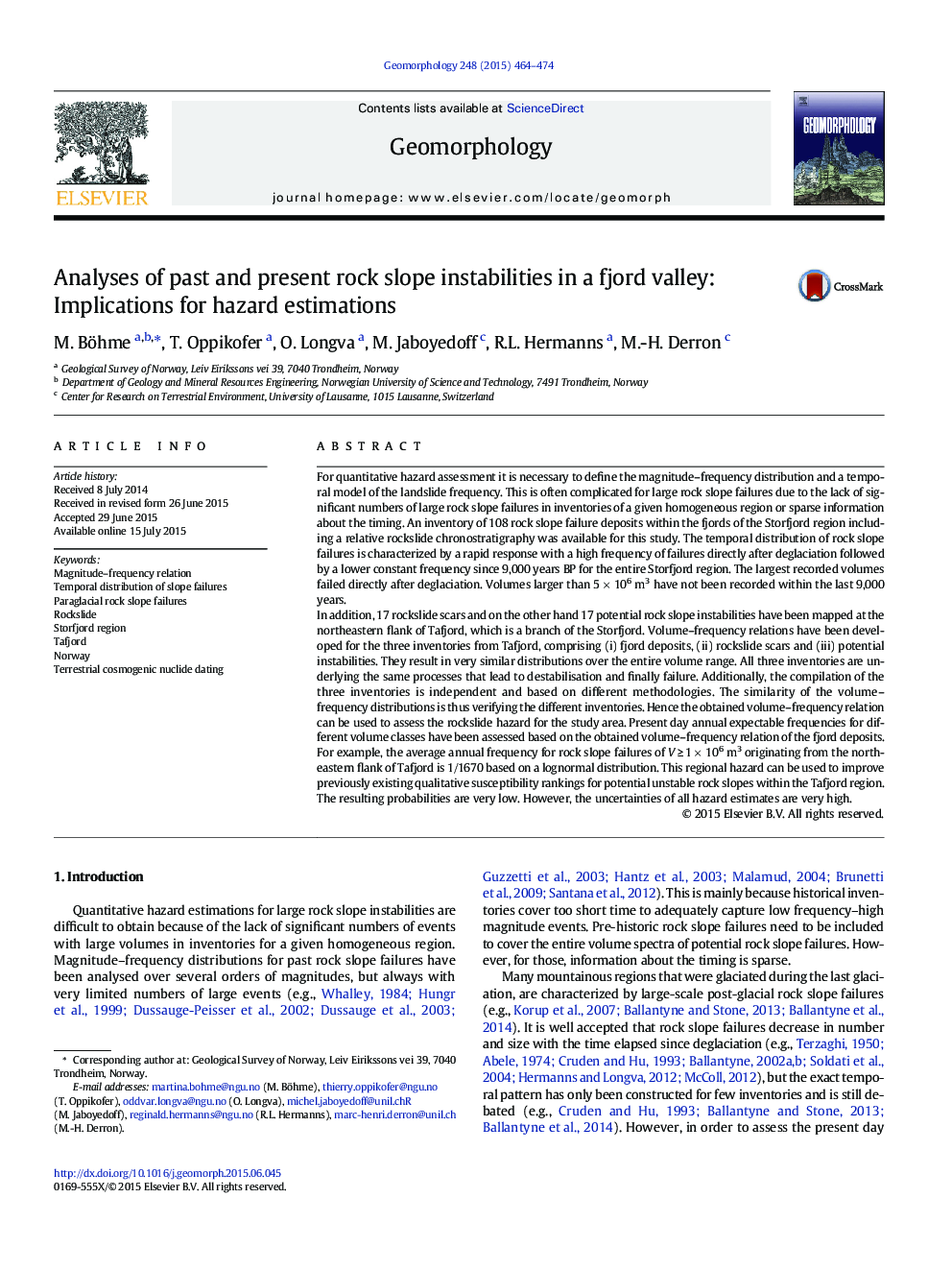| کد مقاله | کد نشریه | سال انتشار | مقاله انگلیسی | نسخه تمام متن |
|---|---|---|---|---|
| 6432103 | 1635401 | 2015 | 11 صفحه PDF | دانلود رایگان |
- Determination of temporal model and magnitude-frequency relation of rock-slope failures following deglaciation
- High frequency of rock slope failures directly after deglaciation followed by a constant frequency
- Magnitude-frequency distributions of 3 independent inventories reveal similar relations.
- Regional hazard assessment based on annual expectable frequencies for different volume classes
- Semi-quantitative hazard estimates for single potential unstable rock-slopes
For quantitative hazard assessment it is necessary to define the magnitude-frequency distribution and a temporal model of the landslide frequency. This is often complicated for large rock slope failures due to the lack of significant numbers of large rock slope failures in inventories of a given homogeneous region or sparse information about the timing. An inventory of 108 rock slope failure deposits within the fjords of the Storfjord region including a relative rockslide chronostratigraphy was available for this study. The temporal distribution of rock slope failures is characterized by a rapid response with a high frequency of failures directly after deglaciation followed by a lower constant frequency since 9,000 years BP for the entire Storfjord region. The largest recorded volumes failed directly after deglaciation. Volumes larger than 5 Ã 106 m3 have not been recorded within the last 9,000 years.In addition, 17 rockslide scars and on the other hand 17 potential rock slope instabilities have been mapped at the northeastern flank of Tafjord, which is a branch of the Storfjord. Volume-frequency relations have been developed for the three inventories from Tafjord, comprising (i) fjord deposits, (ii) rockslide scars and (iii) potential instabilities. They result in very similar distributions over the entire volume range. All three inventories are underlying the same processes that lead to destabilisation and finally failure. Additionally, the compilation of the three inventories is independent and based on different methodologies. The similarity of the volume-frequency distributions is thus verifying the different inventories. Hence the obtained volume-frequency relation can be used to assess the rockslide hazard for the study area. Present day annual expectable frequencies for different volume classes have been assessed based on the obtained volume-frequency relation of the fjord deposits. For example, the average annual frequency for rock slope failures of V â¥Â 1 Ã 106 m3 originating from the northeastern flank of Tafjord is 1/1670 based on a lognormal distribution. This regional hazard can be used to improve previously existing qualitative susceptibility rankings for potential unstable rock slopes within the Tafjord region. The resulting probabilities are very low. However, the uncertainties of all hazard estimates are very high.
Journal: Geomorphology - Volume 248, 1 November 2015, Pages 464-474
